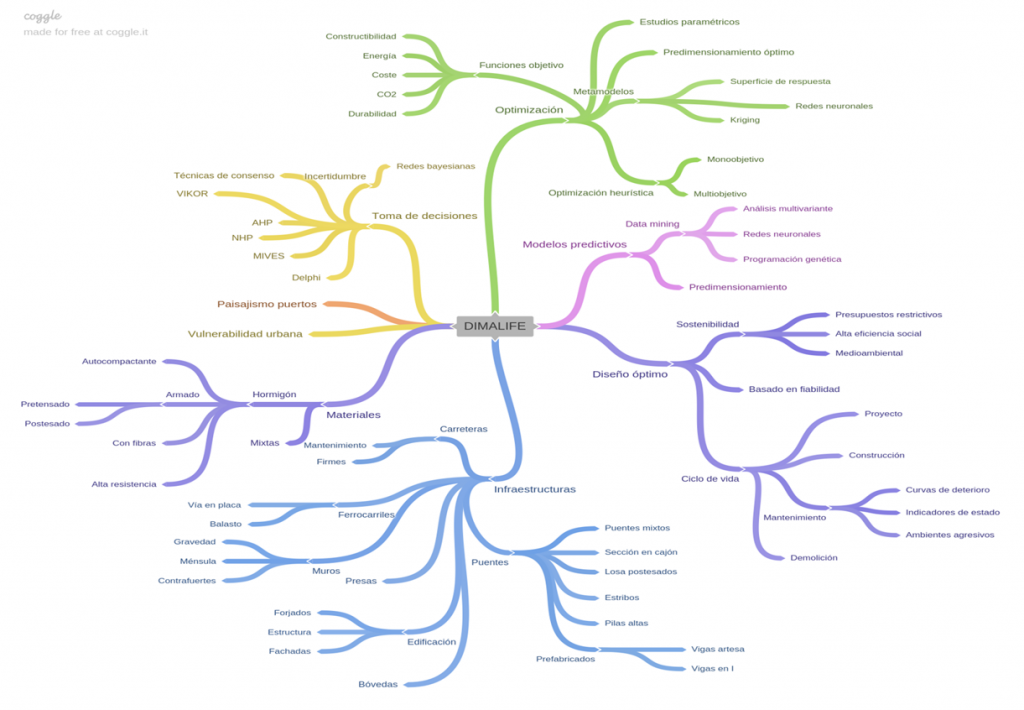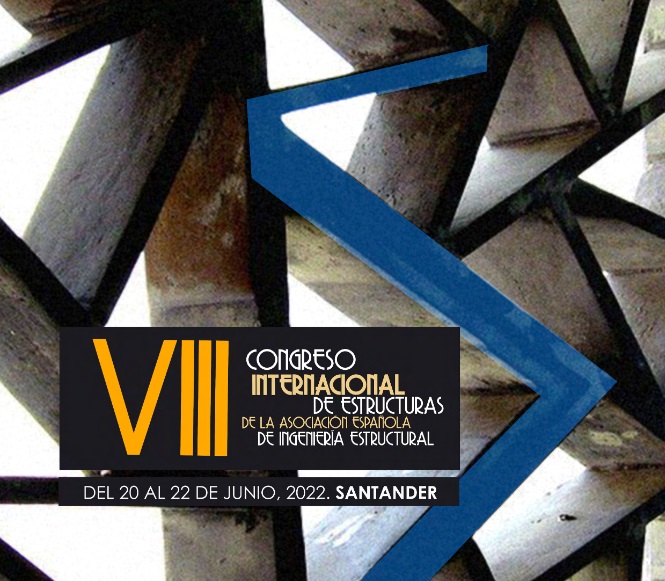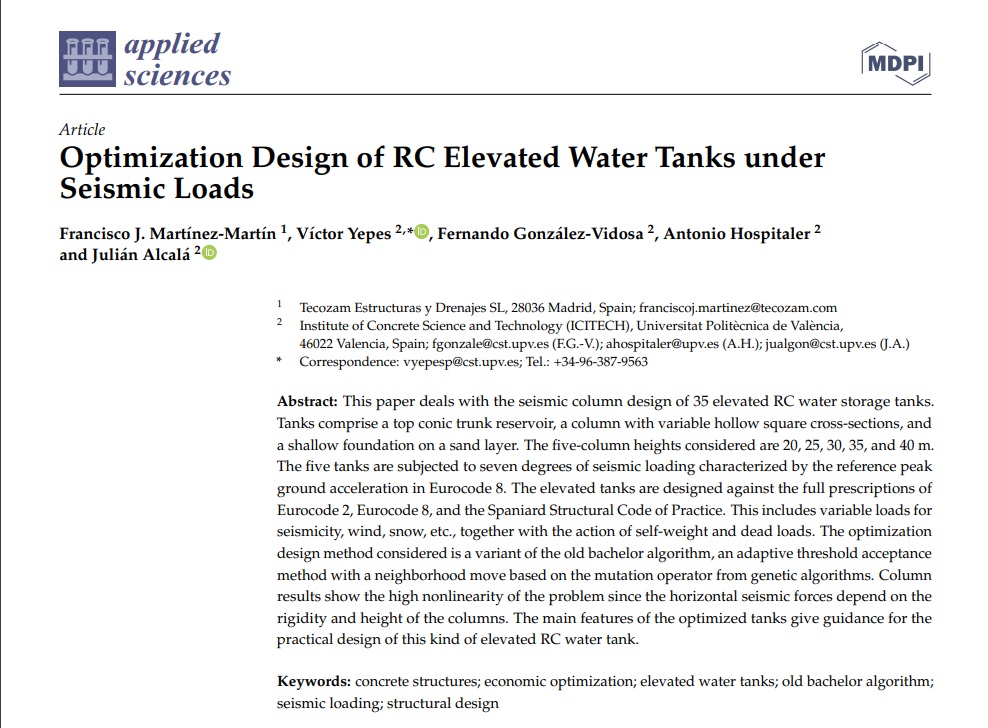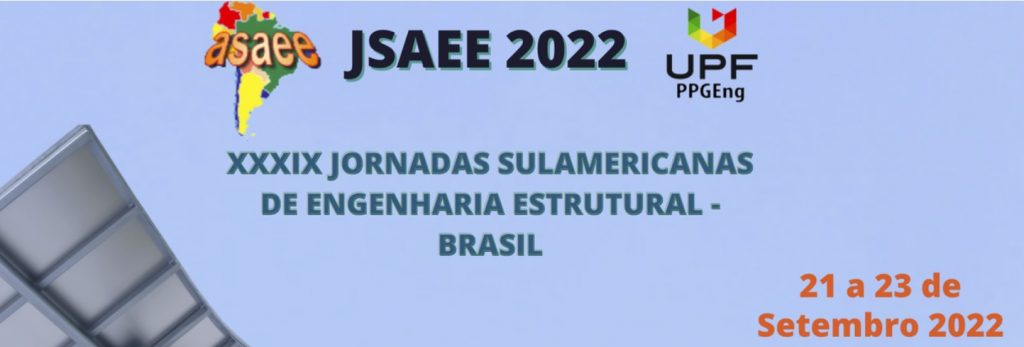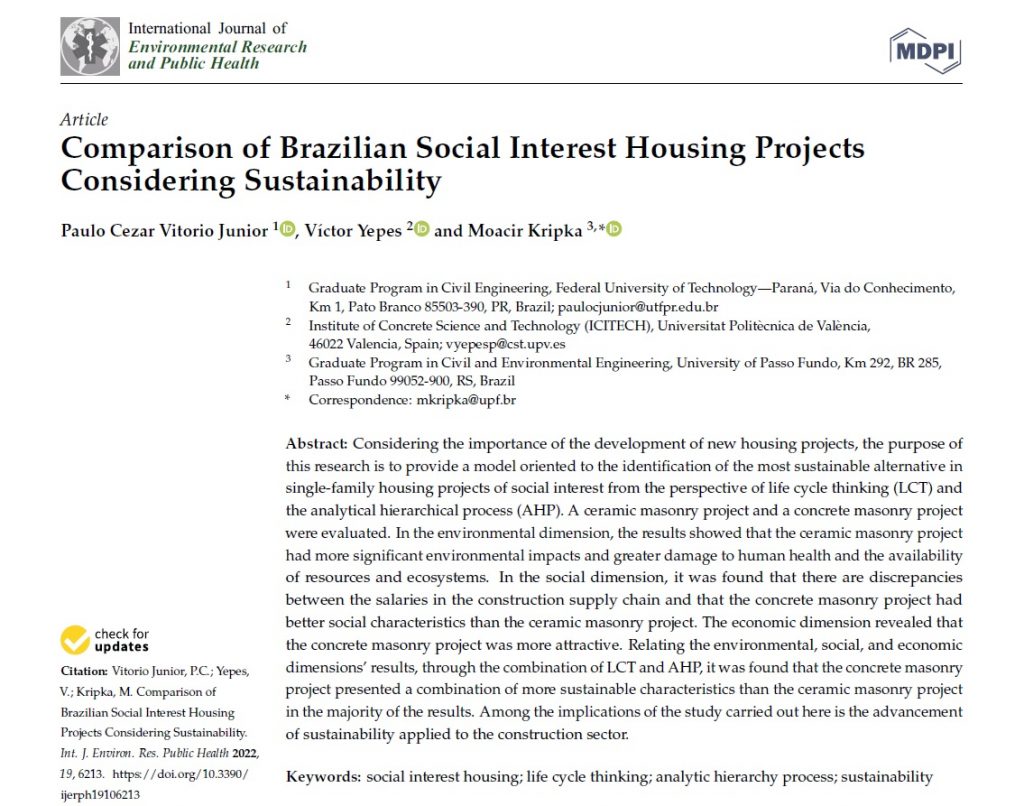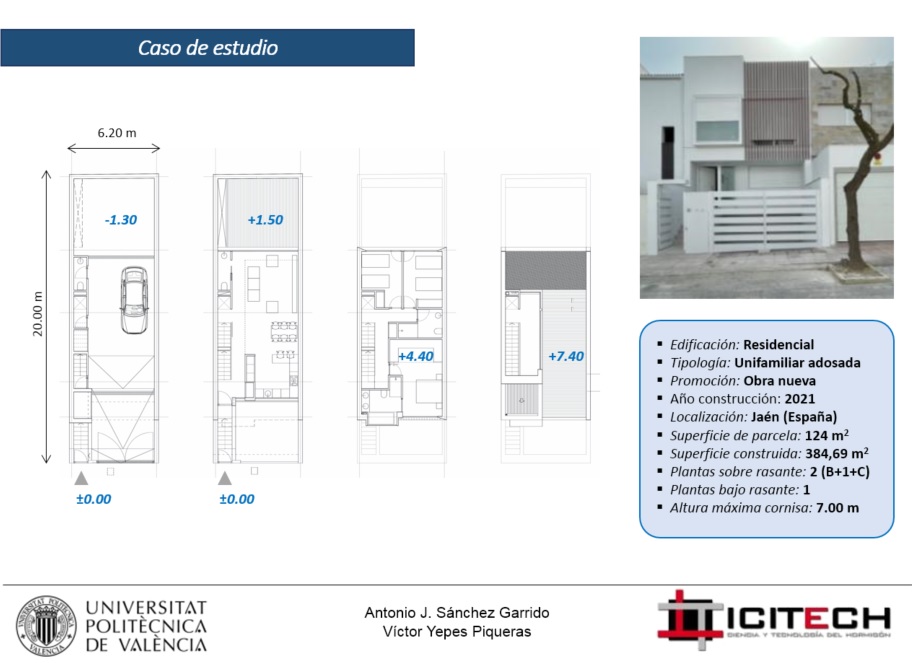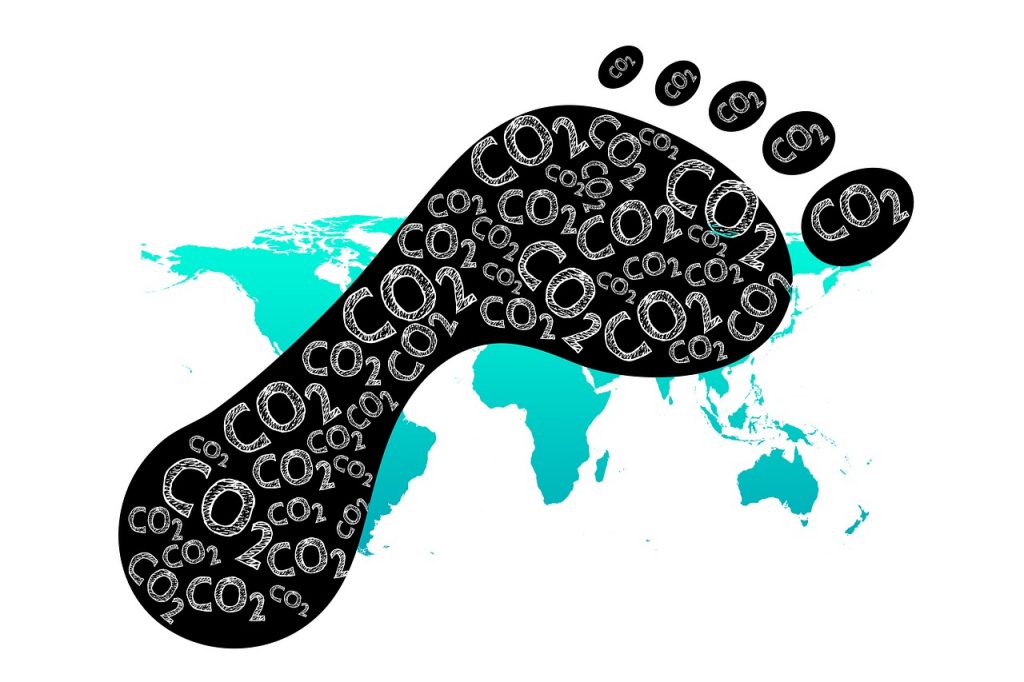 Una pregunta que suelen hacerme es si es necesario el cálculo de la huella de carbono en la redacción de los proyectos de construcción. A estas alturas nadie duda de la importancia que tiene la emisión de gases de efecto invernadero. En el ámbito científico y técnico, la metodología del análisis del ciclo de vida de un producto está plenamente desarrollada. Sin embargo, la docencia de este tipo de técnicas en las enseñanzas universitarias no acaba de incorporarse plenamente en los programas curriculares. Voy a relatar brevemente lo que está ocurriendo a nivel legislativo para que veáis hacia dónde va este tema.
Una pregunta que suelen hacerme es si es necesario el cálculo de la huella de carbono en la redacción de los proyectos de construcción. A estas alturas nadie duda de la importancia que tiene la emisión de gases de efecto invernadero. En el ámbito científico y técnico, la metodología del análisis del ciclo de vida de un producto está plenamente desarrollada. Sin embargo, la docencia de este tipo de técnicas en las enseñanzas universitarias no acaba de incorporarse plenamente en los programas curriculares. Voy a relatar brevemente lo que está ocurriendo a nivel legislativo para que veáis hacia dónde va este tema.
Todo ello viene porque el pasado 1 de abril de 2022 el Pleno del Consell aprobó el proyecto de Ley de Cambio Climático y Transición Ecológica de la Comunitat Valenciana. Se trata de una propuesta de la Conselleria de Agricultura, Desarrollo Rural, Emergencia Climática y Transición Ecológica que traza una hoja de ruta para reducir las emisiones y contribuir a luchar contra el cambio climático.
La nueva normativa establece un objetivo de reducción de emisiones del 40% para 2030 y conseguir la neutralidad en el horizonte del 2050. En cuanto al consumo de energía, el objetivo es disminuir al menos un 35,4% para 2030. En relación con la transición energética, el objetivo es que el 42% del consumo de energía provenga de fuentes renovables, también en 2030. Una de las diversas obligaciones que impone el nuevo texto legislativo es que, a partir del 1 de enero de 2025, todos los municipios de la Comunitat Valenciana con más de 5.000 habitantes estén obligados a calcular y registrar su huella de carbono.
Asimismo, este requisito parece ser cada vez más como una condición necesaria para poder acogerse a determinadas ayudas públicas. A modo de ejemplo, la Resolución de 16 de febrero de 2022, de la Conselleria de Agricultura, Desarrollo Rural, Emergencia Climática y Transición Ecológica, por la que se convocan ayudas a los municipios de la Comunitat Valenciana para potenciar proyectos de lucha contra el cambio climático, para el ejercicio de 2022. Por su parte, las grandes y medianas empresas que operen en todo o parte de la Comunidad Valenciana estarán obligadas, de acuerdo con lo que se establezca reglamentariamente, a calcular y reconocer anualmente la correspondiente huella de carbono de sus actividades.
Este es un ejemplo, en el ámbito regional, de cómo se está imponiendo la evaluación de la huella de carbono en los ámbitos públicos y privados. En muchos más ámbitos y países se está legislando de una forma similar. Por tanto, y respondiendo a la pregunta planteada, la respuesta es que sí no es obligatorio calcular la huella de carbono en los proyectos, lo va a ser en el futuro próximo. Los Colegios Profesionales deberán estar atentos a estos cambios legislativos para exigir estos cálculos cuando se proceda al visado de los proyectos.
Como sabéis, nuestro grupo de investigación no solo está desarrollando la metodología para este cálculo en el ámbito ambiental y social, sino que está aplicando técnicas de decisión multicriterio para que el proyectista sea capaz de decidir la mejor de las opciones en el estudio de soluciones del proyecto. Además, para que estas técnicas sean efectivas, deben aplicarse sobre soluciones optimizadas.
Referencias:
ZHOU, Z.; ALCALÁ, J.; YEPES, V. (2022). Regional sustainable development impact through sustainable bridge optimization. Structures, 41, 1061-1076. DOI: 10.1016/j.istruc.2022.05.047
VITORIO, P.C., Jr.; YEPES, V.; KRIPKA, M. (2022). Comparison of Brazilian Social Interest Housing Projects considering Sustainability. International Journal of Environmental Research and Public Health, 19(10):6213. DOI:10.3390/ijerph19106213
MARTÍNEZ-MUÑOZ, D.; MARTÍ, J.V.; YEPES, V. (2022). Social Impact Assessment Comparison of Composite and Concrete Bridge Alternatives. Sustainability, 14(9):5186. DOI:10.3390/su14095186.
SÁNCHEZ-GARRIDO, A.J.; NAVARRO, I.J.; YEPES, V. (2022). Evaluating the sustainability of soil improvement techniques in foundation substructures. Journal of Cleaner Production, 351: 131463. DOI:10.1016/j.jclepro.2022.131463
MATHERN, A.; PENADÉS-PLÀ, V.; ARMESTO BARROS, J.; YEPES, V. (2022). Practical metamodel-assisted multi-objective design optimization for improved sustainability and buildability of wind turbine foundations. Structural and Multidisciplinary Optimization, 65:46. DOI:10.1007/s00158-021-03154-0
SÁNCHEZ-GARRIDO, A.J.; NAVARRO, I.J.; YEPES, V. (2022). Multi-criteria decision-making applied to the sustainability of building structures based on Modern Methods of Construction. Journal of Cleaner Production, 330:129724. DOI:10.1016/j.jclepro.2021.129724
SIERRA, L.; ARAYA, F.; YEPES, V. (2021). Consideration of uncertainty and multiple disciplines in the determination of sustainable criteria for rural roads using neutrosophic logic. Sustainability, 13(17):9854. DOI:10.3390/su13179854
ATA-ALI, N.; PENADÉS-PLÀ, V.; MARTÍNEZ-MUÑOZ, D.; YEPES, V. (2021). Recycled versus non-recycled insulation alternatives LCA analysis for different climatic conditions in Spain. Resources, Conservation and Recycling, 175, 105838. DOI:10.1016/j.resconrec.2021.105838
HOOSE, A.; YEPES, V.; KRIPKA, M. (2021). Selection of Production Mix in the Agricultural Machinery Industry considering Sustainability in Decision Making. Sustainability, 13(16), 9110. DOI:10.3390/su13169110
MARTÍNEZ-MUÑOZ, D.; MARTÍ, J.V.; YEPES, V. (2021). Comparative life cycle analysis of concrete and composite bridges varying steel recycling ratio. Materials, 14(15):4218. DOI:10.3390/ma14154218
ZHOU, Z.; ALCALÁ, J.; YEPES, V. (2021). Optimized application of sustainable development strategy in international engineering project management. Mathematics, 9(14):1633. DOI:10.3390/math9141633
ZHOU, Z.; ALCALÁ, J.; KRIPKA, M.; YEPES, V. (2021). Life cycle assessment of bridges using Bayesian Networks and Fuzzy Mathematics. Applied Sciences, 11(11):4916. DOI:10.3390/app11114916
BIANCHI, P.F.; YEPES, V.; VITORIO, P.C., Jr.; KRIPKA, M. (2021). Study of alternatives for the design of sustainable low-income housing in Brazil. Sustainability, 13(9):4757. DOI:10.3390/su13094757
SÁNCHEZ-GARRIDO, A.J.; NAVARRO, I.J.; YEPES, V. (2021). Neutrosophic multi-criteria evaluation of sustainable alternatives for the structure of single-family homes. Environmental Impact Assessment Review, 89:106572. DOI:10.1016/j.eiar.2021.106572
NAVARRO, I.J.; MARTÍ, J.V.; YEPES, V. (2021). Neutrosophic completion technique for incomplete higher-order AHP comparison matrices. Mathematics, 9(5):496. DOI:10.3390/math9050496
MARTÍNEZ-MUÑOZ, D.; MARTÍ, J.V.; GARCÍA, J.; YEPES, V. (2021). Embodied energy optimization of buttressed earth-retaining walls with hybrid simulated annealing. Applied Sciences, 11(4):1800. DOI:10.3390/app11041800
ZHOU, Z.; ALCALÁ, J.; YEPES, V. (2021). Environmental, economic and social impact assessment: study of bridges in China’s five major economic regions. International Journal of Environmental Research and Public Health, 18(1):122. DOI:10.3390/ijerph18010122
NAVARRO, I.J.; PENADÉS-PLÀ, V.; MARTÍNEZ-MUÑOZ, D.; REMPLING, R.; YEPES, V. (2020). Life cycle sustainability assessment for multi-criteria decision making in bridge design: A review. Journal of Civil Engineering and Management, 26(7):690-704. DOI:10.3846/jcem.2020.13599.
ZHOU, Z.; ALCALÁ, J.; YEPES, V. (2020). Bridge Carbon Emissions and Driving Factors Based on a Life-Cycle Assessment Case Study: Cable-Stayed Bridge over Hun He River in Liaoning, China. International Journal of Environmental Research and Public Health, 17(16):5953. DOI:10.3390/ijerph17165953
PONS, J.J.; VILLALBA SANCHIS, I.; INSA FRANCO, R.; YEPES, V. (2020). Life cycle assessment of a railway tracks substructures: comparison of ballast and ballastless rail tracks. Environmental Impact Assessment Review, 85:106444. DOI:10.1016/j.eiar.2020.106444
MILANI, C.J.; YEPES, V.; KRIPKA, M. (2020). Proposal of sustainability indicators for the design of small-span bridges. International Journal of Environmental Research and Public Health, 17(12):4488. DOI:10.3390/ijerph17124488
MARTÍNEZ-MUÑOZ, D.; MARTÍ, J.V.; YEPES, V. (2020). Steel-concrete composite bridges: design, life cycle assessment, maintenance and decision making. Advances in Civil Engineering, 2020:8823370. DOI:10.1155/2020/8823370
PENADÉS-PLÀ, V.; MARTÍNEZ-MUÑOZ, D.; GARCÍA-SEGURA, T.; NAVARRO, I.J.; YEPES, V. (2020). Environmental and social impact assessment of optimized post-tensioned concrete road bridges. Sustainability, 12(10), 4265. DOI:10.3390/su12104265
PENADÉS-PLÀ, V.; YEPES, V.; GARCÍA-SEGURA, T. (2020). Robust decision-making design for sustainable pedestrian concrete bridges. Engineering Structures, 209: 109968. DOI:10.1016/j.engstruct.2019.109968
PENADÉS-PLÀ, V.; GARCÍA-SEGURA, T.; YEPES, V. (2020). Robust design optimization for low-cost concrete box-girder bridge. Mathematics, 8(3): 398. DOI:10.3390/math8030398
SÁNCHEZ-GARRIDO, A.J.; YEPES, V. (2020). Multi-criteria assessment of alternative sustainable structures for a self-promoted, single-family home. Journal of Cleaner Production, 258: 120556. DOI:10.1016/j.jclepro.2020.120556
SALAS, J.; YEPES, V. (2020). Enhancing sustainability and resilience through multi-level infrastructure planning. International Journal of Environmental Research and Public Health, 17(3): 962. DOI:10.3390/ijerph17030962
NAVARRO, I.J.; YEPES, V.; MARTÍ, J.V. (2020). Sustainability assessment of concrete bridge deck designs in coastal environments using neutrosophic criteria weights. Structure and Infrastructure Engineering, 16(7): 949-967. DOI:10.1080/15732479.2019.1676791
NAVARRO, I.J.; YEPES, V.; MARTÍ, J.V. (2019). A review of multicriteria assessment techniques applied to sustainable infrastructures design. Advances in Civil Engineering, 2019: 6134803. DOI:10.1155/2019/6134803
SALAS, J.; YEPES, V. (2019). VisualUVAM: A Decision Support System Addressing the Curse of Dimensionality for the Multi-Scale Assessment of Urban Vulnerability in Spain. Sustainability, 11(8): 2191. DOI:10.3390/su11082191
MARTÍNEZ-FERNÁNDEZ, P.; VILLALBA-SANCHÍS, I.; YEPES, V.; INSA-FRANCO, R. (2019). A review of modelling and optimisation methods applied to railways energy consumption. Journal of Cleaner Production, 222:153-162. DOI:10.1016/j.jclepro.2019.03.037
KRIPKA, M.; YEPES, V.; MILANI, C.J. (2019). Selection of sustainable short-span bridge design in Brazil. Sustainability, 11(5):1307. DOI:10.3390/su11051307
SALAS, J.; YEPES, V. (2019). MS-ReRO and D-ROSE methods: assessing relational uncertainty and evaluating scenarios’ risks and opportunities on multi-scale infrastructure systems. Journal of Cleaner Production, 216:607-623. DOI:10.1016/j.jclepro.2018.12.083
PENADÉS-PLÀ, V.; GARCÍA-SEGURA, T.; YEPES, V. (2019). Accelerated optimization method for low-embodied energy concrete box-girder bridge design. Engineering Structures, 179:556-565. DOI:10.1016/j.engstruct.2018.11.015
NAVARRO, I.J.; MARTÍ, J.V.; YEPES, V. (2019). Reliability-based maintenance optimization of corrosion preventive designs under a life cycle perspective. Environmental Impact Assessment Review, 74:23-34. DOI:10.1016/j.eiar.2018.10.001
GARCÍA-SEGURA, T.; PENADÉS-PLÀ, V.; YEPES, V. (2018). Sustainable bridge design by metamodel-assisted multi-objective optimization and decision-making under uncertainty. Journal of Cleaner Production, 202: 904-915. DOI:10.1016/j.jclepro.2018.08.177
NAVARRO, I.J.; YEPES, V.; MARTÍ, J.V.; GONZÁLEZ-VIDOSA, F. (2018). Life cycle impact assessment of corrosion preventive designs applied to prestressed concrete bridge decks. Journal of Cleaner Production, 196: 698-713. DOI:10.1016/j.jclepro.2018.06.110
NAVARRO, I.J.; YEPES, V.; MARTÍ, J.V. (2018). Social life cycle assessment of concrete bridge decks exposed to aggressive environments. Environmental Impact Assessment Review, 72:50-63. DOI:10.1016/j.eiar.2018.05.003
PONS, J.J.; PENADÉS-PLÀ, V.; YEPES, V.; MARTÍ, J.V. (2018). Life cycle assessment of earth-retaining walls: An environmental comparison. Journal of Cleaner Production, 192:411-420. DOI:10.1016/j.jclepro.2018.04.268
SIERRA, L.A.; YEPES, V.; PELLICER, E. (2018). A review of multi-criteria assessment of the social sustainability of infrastructures. Journal of Cleaner Production, 187:496-513. DOI:10.1016/j.jclepro.2018.03.022
NAVARRO, I.J.; YEPES, V.; MARTÍ, J.V. (2018). Life cycle cost assessment of preventive strategies applied to prestressed concrete bridges exposed to chlorides. Sustainability, 10(3):845. DOI:10.3390/su10030845
PENADÉS-PLÀ, V.; GARCÍA-SEGURA, T.; MARTÍ, J.V.; YEPES, V. (2018). An optimization-LCA of a prestressed concrete precast bridge. Sustainability, 10(3):685. DOI:10.3390/su10030685
SIERRA, L.A.; YEPES, V.; GARCÍA-SEGURA, T.; PELLICER, E. (2018). Bayesian network method for decision-making about the social sustainability of infrastructure projects. Journal of Cleaner Production, 176:521-534. DOI:10.1016/j.jclepro.2017.12.140
GARCÍA-SEGURA, T.; YEPES, V.; FRANGOPOL, D.M. (2017). Multi-Objective Design of Post-Tensioned Concrete Road Bridges Using Artificial Neural Networks. Structural and Multidisciplinary Optimization, 56(1):139-150. DOI:10.1007/s00158-017-1653-0
GARCÍA-SEGURA, T.; YEPES, V.; FRANGOPOL, D.M.; YANG, D.Y. (2017). Lifetime Reliability-Based Optimization of Post-Tensioned Box-Girder Bridges. Engineering Structures, 145:381-391. DOI:10.1016/j.engstruct.2017.05.013
MOLINA-MORENO, F.; MARTÍ, J.V.; YEPES, V. (2017). Carbon embodied optimization for buttressed earth-retaining walls: implications for low-carbon conceptual designs. Journal of Cleaner Production, 164:872-884. DOI:10.1016/j.jclepro.2017.06.246
PENADÉS-PLÀ, V.; MARTÍ, J.V.; GARCÍA-SEGURA, T.; YEPES, V. (2017). Life-cycle assessment: A comparison between two optimal post-tensioned concrete box-girder road bridges. Sustainability, 9(10):1864. DOI:10.3390/su9101864
SIERRA, L.A.; PELLICER, E.; YEPES, V. (2017). Method for estimating the social sustainability of infrastructure projects. Environmental Impact Assessment Review, 65:41-53. DOI:10.1016/j.eiar.2017.02.004
SIERRA, L.A.; YEPES, V.; PELLICER, E. (2017). Assessing the social sustainability contribution of an infrastructure project under conditions of uncertainty. Environmental Impact Assessment Review, 67:61-72. DOI:10.1016/j.eiar.2017.08.003
TORRES-MACHI, C.; PELLICER, E.; YEPES, V.; CHAMORRO, A. (2017). Towards a sustainable optimization of pavement maintenance programs under budgetary restrictions. Journal of Cleaner Production, 148:90-102. DOI:10.1016/j.jclepro.2017.01.100
ZASTROW, P.; MOLINA-MORENO, F.; GARCÍA-SEGURA, T.; MARTÍ, J.V.; YEPES, V. (2017). Life cycle assessment of cost-optimized buttress earth-retaining walls: a parametric study. Journal of Cleaner Production, 140:1037-1048. DOI: 10.1016/j.jclepro.2016.10.085
PENADÉS-PLÀ, V.; GARCÍA-SEGURA, T.; MARTÍ, J.V.; YEPES, V. (2016). A review of multi-criteria decision making methods applied to the sustainable bridge design. Sustainability, 8(12):1295. DOI:10.3390/su8121295
GARCÍA-SEGURA, T.; YEPES, V. (2016). Multiobjective optimization of post-tensioned concrete box-girder road bridges considering cost, CO2 emissions, and safety. Engineering Structures, 125:325-336. DOI:10.1016/j.engstruct.2016.07.012
MARTÍ, J.V.; GARCÍA-SEGURA, T.; YEPES, V. (2016). Structural design of precast-prestressed concrete U-beam road bridges based on embodied energy. Journal of Cleaner Production, 120:231-240. DOI:10.1016/j.jclepro.2016.02.024
SIERRA, L.A.; PELLICER, E.; YEPES, V. (2016). Social sustainability in the lifecycle of Chilean public infrastructure. Journal of Construction Engineering and Management, 142(5):05015020. DOI:10.1061/(ASCE)CO.1943-7862.0001099
TORRES-MACHÍ, C.; CHAMORRO, A.; PELLICER, E.; YEPES, V.; VIDELA, C. (2015). Sustainable pavement management: Integrating economic, technical, and environmental aspects in decision making. Transportation Research Record, 2523:56-63. DOI:10.3141/2523-07
GARCÍA-SEGURA, T.; YEPES, V.; ALCALÁ, J.; PÉREZ-LÓPEZ, E. (2015). Hybrid harmony search for sustainable design of post-tensioned concrete box-girder pedestrian bridges. Engineering Structures, 92:112-122. DOI:10.1016/j.engstruct.2015.03.015
YEPES, V.; MARTÍ, J.V.; GARCÍA-SEGURA, T. (2015). Cost and CO2 emission optimization of precast-prestressed concrete U-beam road bridges by a hybrid glowworm swarm algorithm. Automation in Construction, 49:123-134. DOI:10.1016/j.autcon.2014.10.013
TORRES-MACHÍ, C.; CHAMORRO, A.; YEPES, V.; PELLICER, E. (2014). Current models and practices of economic and environmental evaluation for sustainable network-level pavement management. Revista de la Construcción, 13(2): 49-56. DOI:10.4067/S0718-915X2014000200006
TORRES-MACHÍ, C.; CHAMORRO, A.; VIDELA, C.; PELLICER, E.; YEPES, V. (2014). An iterative approach for the optimization of pavement maintenance management at the network level. The Scientific World Journal, 2014, 524329. DOI:10.1155/2014/524329
GARCÍA-SEGURA, T.; YEPES, V.; ALCALÁ, J. (2014). Life-cycle greenhouse gas emissions of blended cement concrete including carbonation and durability. International Journal of Life Cycle Assessment, 19(1):3-12. DOI:10.1007/s11367-013-0614-0
MARTINEZ-MARTIN, F.J.; GONZALEZ-VIDOSA, F.; HOSPITALER, A.; YEPES, V. (2012). Multi-objective optimization design of bridge piers with hybrid heuristic algorithms. Journal of Zhejiang University-SCIENCE A (Applied Physics & Engineering), 13(6):420-432. DOI:10.1631/jzus.A1100304
YEPES, V.; GONZÁLEZ-VIDOSA, F.; ALCALÁ, J.; VILLALBA, P. (2012). CO2-Optimization Design of Reinforced Concrete Retaining Walls based on a VNS-Threshold Acceptance Strategy. Journal of Computing in Civil Engineering, 26 (3):378-386. DOI:10.1061/(ASCE)CP.1943-5487.0000140
PAYÁ-ZAFORTEZA, I.; YEPES, V.; HOSPITALER, A.; GONZÁLEZ-VIDOSA, F. (2009). CO2-Optimization of Reinforced Concrete Frames by Simulated Annealing. Engineering Structures, 31(7): 1501-1508. DOI: 10.1016/j.engstruct.2009.02.034

Esta obra está bajo una licencia de Creative Commons Reconocimiento-NoComercial-SinObraDerivada 4.0 Internacional.
